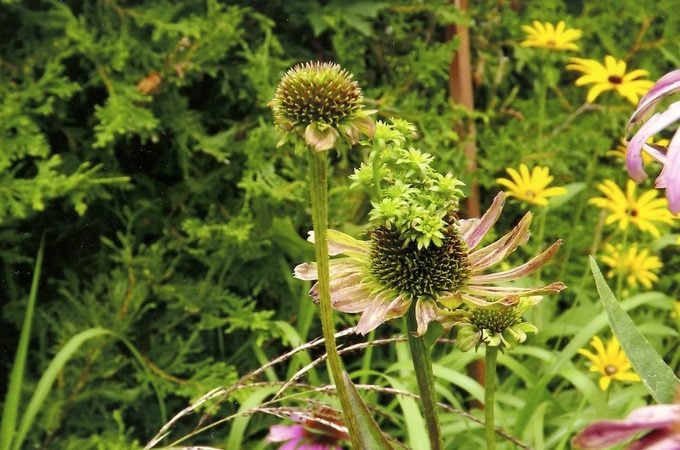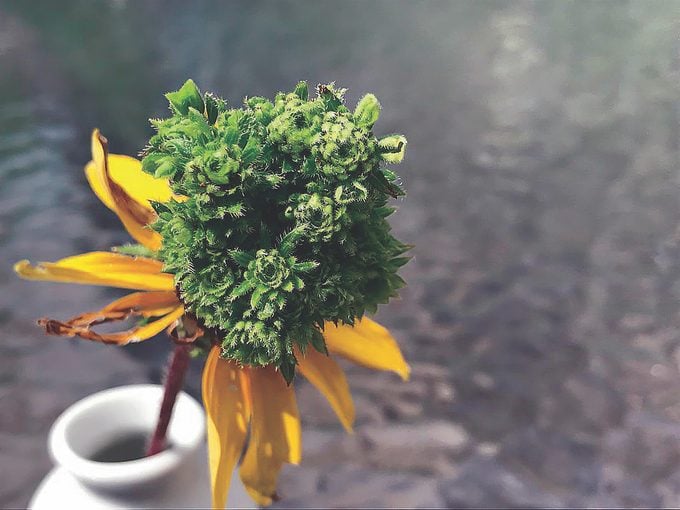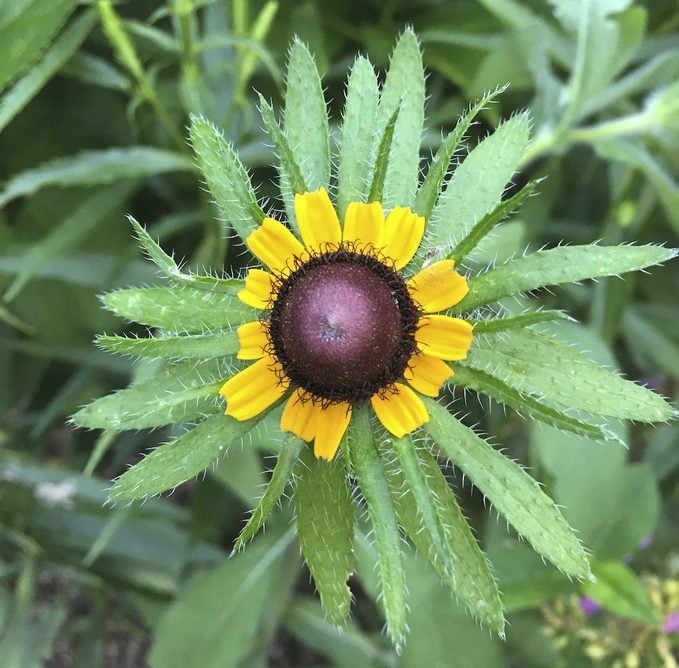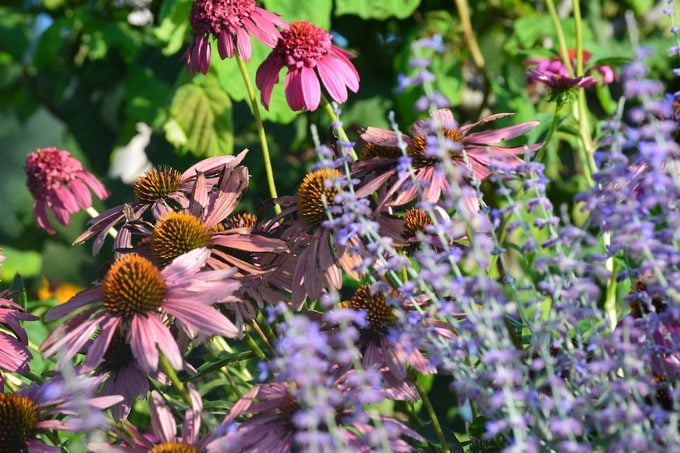Aster Yellows Disease and Other Coneflower Problems
Updated: Jul. 06, 2023
Learn how to spot the signs of aster yellows disease and how to treat it in your garden. Also find out what causes this plant disease.
What Is Aster Yellows Disease?

“It looks like this purple coneflower is growing babies out of the seedpod. What is going on?” asks Birds & Blooms reader Tom Nealon of Tillsonburg, Ohio.
Horticultural expert Melinda Myers: Aster yellows caused this bizarre growth. The disease causes distorted growth and discoloration of flower petals. The aster leafhopper spreads aster yellows disease. When this insect feeds on an infected plant, it ingests the disease organism and then injects it into the next plant it feeds on. Your plants will survive but will serve as a source of infection for other nearby plants. Remove infected plants as soon as you find them to reduce the spread.
Did You Know? Aster leafhoppers are thin, wedge-shaped and dull light green. Look for six white spots on the top of the head.
Grow prairie coneflower in hot, sunny spots.
Aster Yellows Treatment

“There’s something growing out of the tops of my brown-eyed Susans. What could it be?” asks Stephen Ziring of Willow Grove, Pennsylvania.
Melinda: This distorted growth is caused by aster yellows. This disease attacks over 300 species of plants, including rudbeckias, coneflowers, marigolds, carrots and potatoes.
Aster leafhoppers carry the bacteria-like organisms that cause this disease. The leafhopper feeds on an infected plant and ingests some of the organism, which it injects into the next plant it visits. Remove any infected materials. Controlling leafhoppers is difficult as they’re continually on the move, and spraying insecticides can harm beneficial insects that help manage pests.
Learn how to treat black spot and rose rosette disease.

“Why did an additional row of green petals grow around this bloom? Another flower on the same stem was normal,” ask John and Judy Haynicz of Monroeville, New Jersey.
Melinda: Aster yellows likely caused this bizarre growth. The aster yellow leafhopper carries the phytoplasma disease organism from infected plants to healthy specimens. Infected plants often survive, but they serve as a source for future infections. Remove infected plants as soon as you find them.
Disease-Resistant Beacon Impatiens adds color to shade.
More Coneflower Growing Problems

“I’ve been having difficulty growing coneflowers and zinnias. Any advice you can give me on how to make them thrive in my garden?” asks Sierra Conine of El Dorado, Kansas.
Melinda: Start by reviewing your growing conditions. Both of these plants prefer full sun and will tolerate dry soils once established. If you find that your conditions are appropriate, the problem could be disease.
Both these plants are susceptible to a disease called aster yellows, which is transferred from infected plants to healthy ones by the aster yellow leafhopper. The disease can stunt the plants and distort and discolor the flowers. Remove infected plants as soon as you see them to prevent the disease from spreading to healthy plants.
Next, learn how to get rid of powdery mildew.
